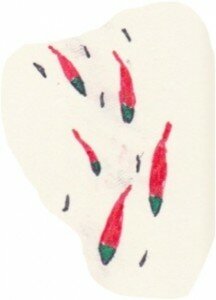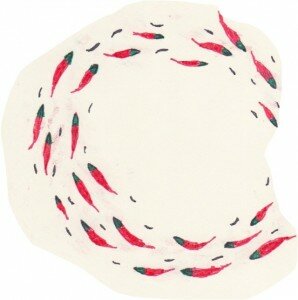Dead sockeye -- Flickr "Watershed_Watch"
That’s the headline on Hume’s article today in the Globe & Mail.
The lack of hard data on the ocean environment has become an important issue to a federal commission investigating the collapse of sockeye salmon stocks in the Fraser River.
Repeatedly, scientists testifying at the Cohen Commission have said they don’t really know what happens to salmon once they have left fresh water and headed out into the “black box” of the Pacific Ocean. They have complained about a shortage of data, or no data at all, and have said there are limited funds available for research.
Well… it’s not just the ocean environment that has a lack of data. Pretty much every life stage of Fraser sockeye has big black boxes of little to no data. (hard or soft…)
Sure some life stages and critical habitat have been studied more than others, and some folks think they know — but then of course they don’t know what they don’t know, and sometimes they think they know what they don’t know… and so on…
The cold hard reality that Justice Cohen is going to be faced with — or is already faced with — is that we just don’t know. For example, we don’t know how many sockeye juveniles leave the Fraser every year, we don’t even know how many juvenile sockeye leave the majority of the 150 rearing areas where they spend some time as babies.
(DFO only looks at two rearing lakes in any detail… or depth.)
What we know of the population dynamics of Fraser sockeye — and wild salmon in general — is limited to about the simple fact that we know they swim in water… when compared to all of what we don’t know.
No amount of systems theory, chaos theory, or computer modelling is going to shed much more light on things either.
Not only do we not know much about sockeye we know very little about the rest of the dynamics surrounding them. Just as the article suggests:
One of the papers filed with the commission identifies a “hotspot” in Queen Charlotte Sound, for example, where more than 10,000 sharks gather on a main salmon migration route – but nobody knows why the sharks are there, how long they are there, or what they are feeding on.
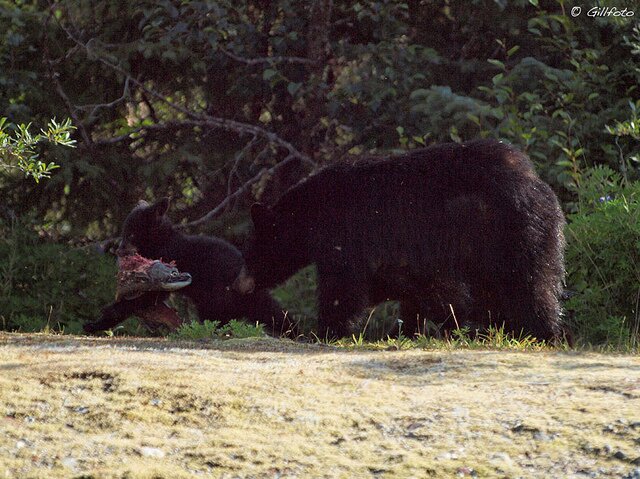
Black bear cub with sockeye -- Flickr: Gillfoto
Gee… this sounds like grizzly bear research in BC. Or black bear research. Or eagle research. Or coastal wolves research. Or mink research. Or osprey research… or… or…
We simply… just don’t know.
_ _ _ _ _ _ _
.
.
If we can’t even predict our own brain patterns, then why do we think we can predict behavior and nature of wild salmon runs?
(for example, does anyone have an explanation on what the heck happened last year? — with 30 million or so returning sockeye to the Fraser. We’ll never know…)
_ _ _ _ _ _
We call it ecosystem-based planning or ecosystem-based management… but we don’t know shit about the ecosystem…
Management is defined as: “The process of dealing with or controlling things or people”.
News flash… we can’t control wild salmon… but we sure as hell can control people if need be… (look at the great federal Conservative crime plans…)
Planning is defined as: “The process of making plans for something” .
Well… what are we making?
An ecosystem?
(well… that’s what the engineers of things like “no-net less to habitat” policies would have us think… we can just “re-create” ecosystems better than Mother Nature did in the first place over millenia…)
_ _ _ _ _ _
One of the definitions of plan suggests: “A systematic arrangement of elements or important parts; a configuration or outline” .
Hmmm… so what are the “important parts”…? And what are we trying to “configure”? And how can we know what we’re trying to configure if we don’t really know much about things in the first place (e.g. the “black box” of the North Pacific)?
_ _ _ _ _ _
The article continues:
The knowledge gap caused Tim Leadem, a lawyer representing a coalition of conservation groups, to wonder out loud Thursday if the Cohen Commission will ever get a definitive answer on what caused the Fraser River sockeye population to collapse. The commission was appointed in 2009 after only one million salmon returned to spawn instead of the 10 million expected.
“What was the cause of the 2009 decline?” Mr. Leadem asked a panel of scientists testifying about the impact of predators on salmon. “I expect at the end of the day … [it will be an inconclusive] death by 1,000 cuts.”
Gee. Maybe Mr. Leadem has seen my cartoon:

Salmon... death of a thousands cuts
I sense a certain frustration or defeatism in that comment…
Yes, Mr. Leadem it is a thousands cuts or so… but the worst ones, the mortal ones for some sockeye runs — have been inflicted by us.
Through direct action (harvest)… or inaction (how’s that enforcement of the Fisheries Act going?)
Pick your killer; our knives are sharp. We’ve filleted Fraser sockeye runs faster than the old terribly named: “” used in salmon canneries.
_ _ _ _ _ _ _
Article continues:
Mr. Leadem noted most of the science teams that have presented papers to the Cohen Commission have concluded by saying more research is needed.
“This is perplexing,” he said. “If we are depending on science [for guidance], where are we going to find the funding? And who’s going to be pulling the strings and saying what science goes forward?”
Mr. Leadem said it appears scientists “are in a world where you are scrambling for dollars” while facing a growing list of questions.
“Yeah, we are scrambling for research funding and it is going to be the nature of science that there are always more questions that need answering,” said Andrew Trites, a professor and director at the University of British Columbia Fisheries Centre.
EXACTLY MY FRIGGING POINT!! (thank-you Dr. Trites).
We don’t have to depend on just science for the “answers” — because it won’t have any.
It might be able to provide gentle guidance, or thoughts, or an ‘answer’ here or there — however, at its fundamental core answering one question through science only opens up two more questions. It’s like the mythical beast Hydra — cut off one head, and two more pop up to replace it.
And so, when it comes to “fisheries” science, it is not really a practice of “truths” and “facts” — and cannot provide all the “answers”. At its heart it is a practice of questions and theories… and analysis of things that we will never understand (e.g. the ocean).
We don’t have all the answers for how our brain works, yet we still function on a day-to-day basis. We still design teaching curricula for our children and send them off to school. And, amazingly, we can actually function and “think” on a day-to-day basis without knowing everything about our brains…
We don’t know the “answers” for the magic of how a child comes into being in the meeting between sperm and egg… We don’t know the “answers” about how we develop a soul, or even the magic occurring between our brains, hearts, lungs and every other organ working in unison. It’s a true magic mystery…
Yet we still carry on day-in and day-out…
_ _ _ _ _ _
The article:
Mr. Justice Bruce Cohen, the B.C. Supreme Court judge who is heading the hearings, asked if there is an overall strategy for addressing the many unanswered questions about the ocean environment. “Within DFO and within the larger community of science … is there an overarching body that does a macro analysis of all the science that’s taking place? Who’s going to draw the agenda? Is this a scrambled situation … or is there actually a game plane here?” he asked.
“My perception as an academic . . . in terms of fisheries management … I don’t feel there is a game plan,” replied Dr. Trites, who appeared on a panel with John Ford, head of cetacean research in the Pacific for Department of Fisheries and Oceans, and Peter Olesiuk, DFO’s head of pinniped research.
No… no game plan indeed.
There never has been — and never will be (with all due respect).
And even if there was… what difference would it make?
“Salmon management”… “fisheries management” is a game of politics — not science.
Science can provide some gentle guidance — however it is certainly not the game plan.
(Just like “science” isn’t the game plan in the Vancouver Canucks’ current run at the Stanley Cup — it assists, but is not the plan).
_ _ _ _ _ _ _
Our relationship with wild salmon is simply that… A Relationship.
What is that… a ‘relationship’?
Well… dictionary.com suggests: “The way in which two or more concepts, objects, or people are connected, or the state of being connected.”
Just like the relationship between our hearts, minds, and lungs… the relationship between white blood cells and our immune system (our most ancient of systems)… the relationship between children and parents… the relationship between dogs and owners…
What does connected mean?
Joined or linked together;
Related by family.
Hmmmm…..
And curiously, even in mathematics it means:
Not decomposable into two disjoint nonempty open sets.
_ _ _ _ _ _
Salmon and people are both concepts and objects…
And… well… here along the Pacific Rim — we are connected. We are in a relationship.
And unfortunately, this is not a balanced relationship. This is not an equal give-and-take relationship.
We’ve been more on the taking end…
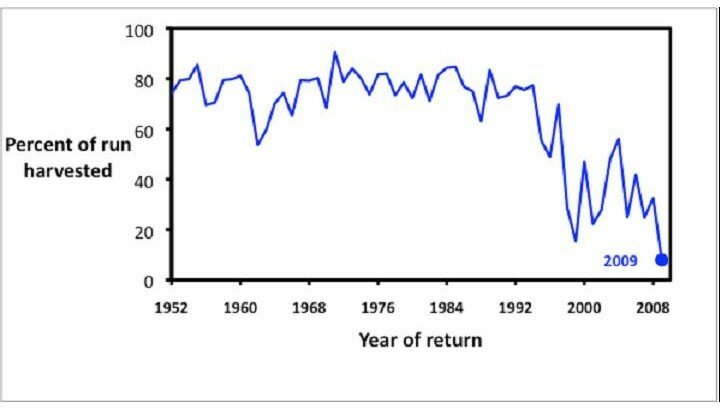
take, take, take... over 80% for 100-years or so...
When people get married, or make commitments, or talk about their relationship — they don’t look to science, nor even tout the latest studies or research, or engage in a peer-review process…
If you talk to a couple that’s been married for 60 years, they don’t tell you about how the marvels of science kept them together.
No… they generally talk about the hard work… the commitments… a knowing… and call it cheesy, or hairy-fairy… but there’s also (as the song says) “a whole lotta love…”
If salmon are as important (e.g. more important to BC’ers as French is to Quebecers) — not that we need surveys to tell us this — then why this great reliance on science… on data… on research…?
The article concludes:
Lara Tessaro, junior commission counsel, later asked the witnesses to name the DFO managers who are directing scientific research in the Pacific, a line of questioning that suggested the issue may be revisited as the hearings continue.
I think most of us know the answer to that question… (and unfortunately, from what it says in the recent , we won’t be getting Project 11 – Fraser River sockeye salmon: status of DFO science and management
(which was to include an analysis, including an economic analysis, of DFO activities in Fraser River sockeye management since 1985; DFO science and research expenditures related to Fraser sockeye; and an analysis to evaluate DFO’s ability to meet its stated management objectives relative to Fraser sockeye since 1985).
The great department of Oceans sails a rudderless ship… and will it be exposed as to just how rudderless?
I’m curious to hear the answers to this and who’s at the helm (or not, or will it be like the story of the Queen of the North..? including the stifling of the truth…) — Yet, I sure hope that in the multiple thousands of pages that are being produced by the Cohen Commission that a little more time gets spent on plain language to describe our relationship with wild salmon.
Our connectedness… and how the relationship needs to improve… drastically. And “data” is not the answer… it’s simply a tool, one piece of the equation… one piece of the relationship… one piece of the connectedness.


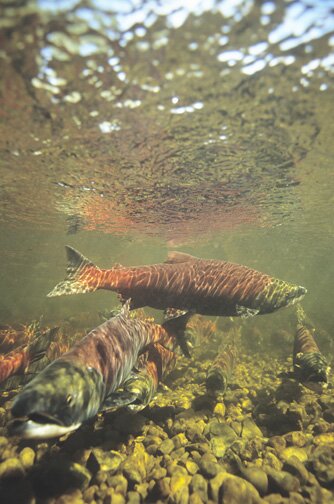









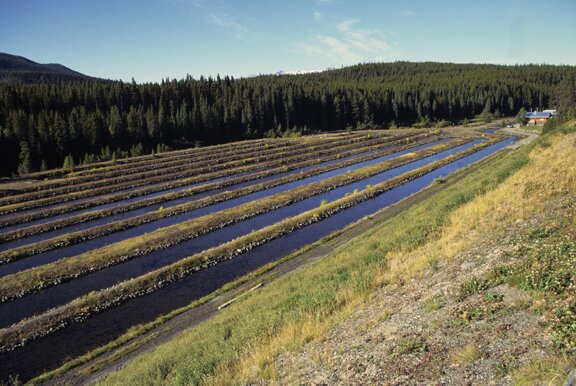


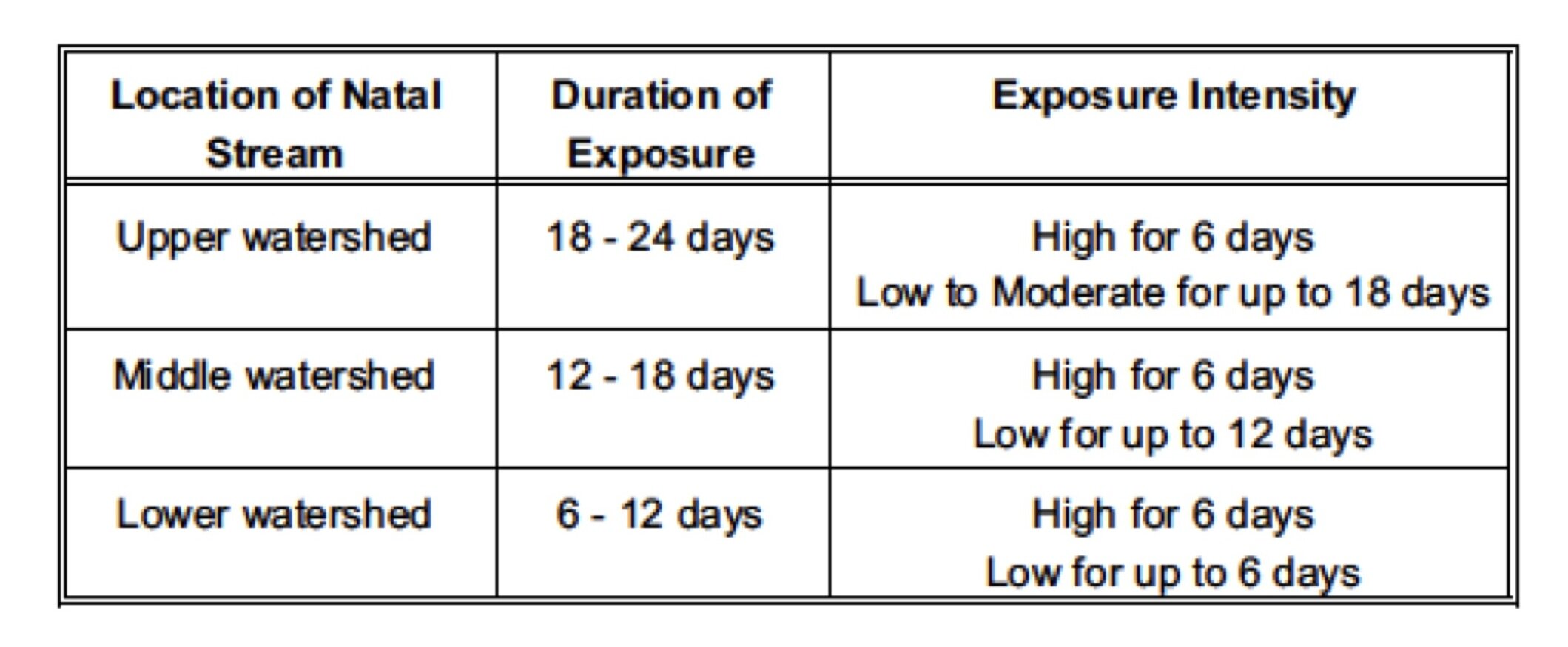
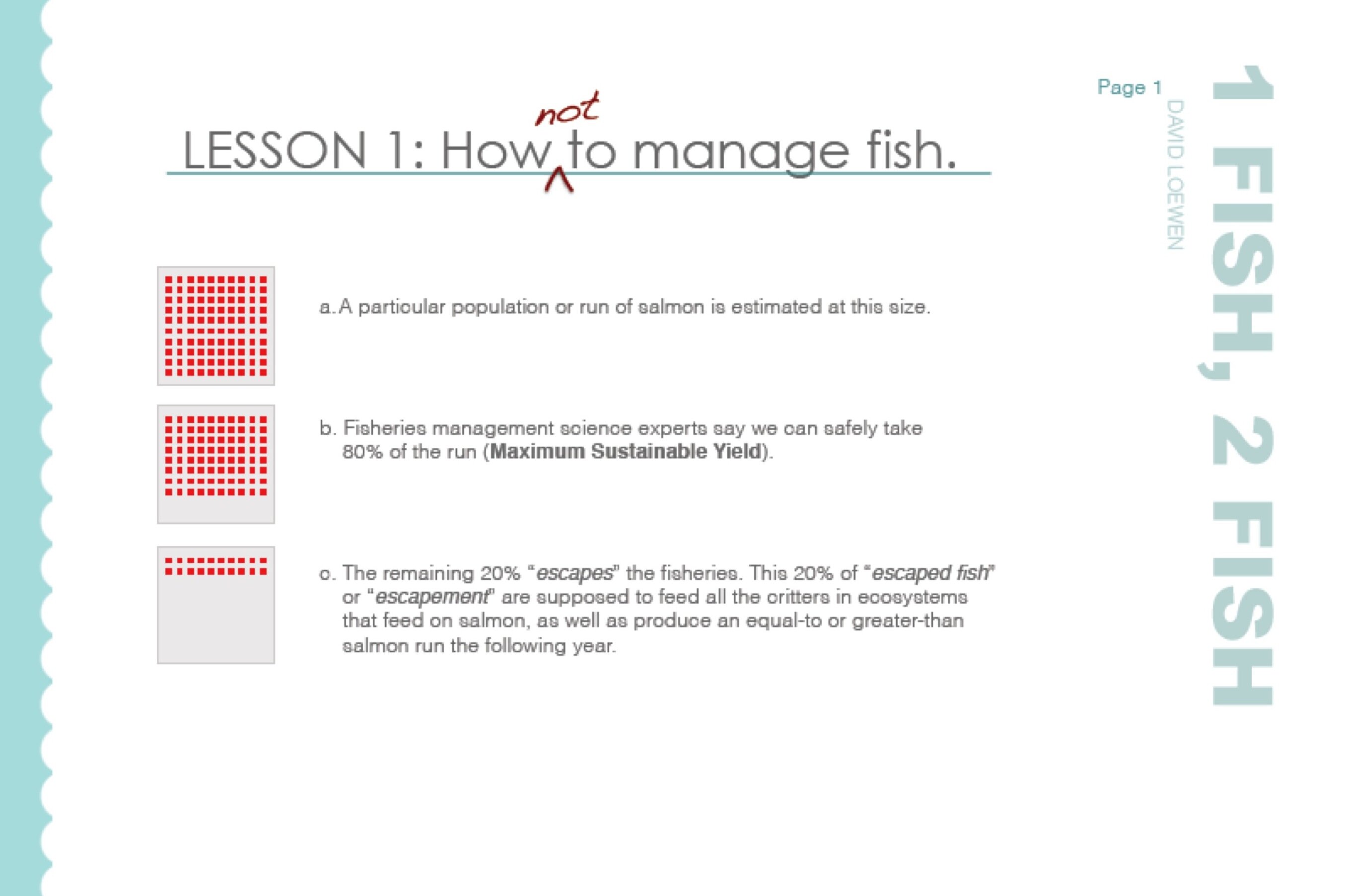





 Wow, sounds like a great investment opportunity…?!?!
Wow, sounds like a great investment opportunity…?!?!



